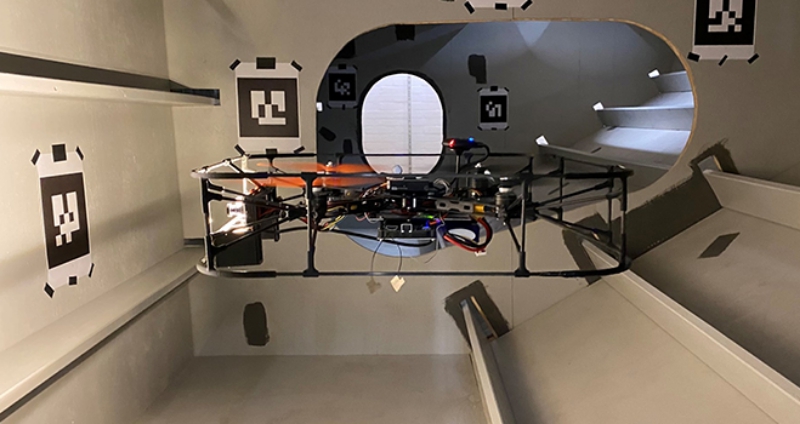Surveys for classification of vessels are currently carried out by human specialists who move through the ships’ many different tanks to check whether the metal hull has started to corrode– and, if so, how serious the damage is.In cooperation with Force Technology, which has been carrying out drone inspections for a number of years, as well as Dampselskabet NORDEN and Lloyd’s Register, researchers from DTU Electrical Engineering have now developed the first drones designed to take over such inspections. The autonomous drones will even be able to perform the inspections more accurately.
The project has now reached its first important milestone as it has been demonstrated that all the necessary functionalities on the drones are working satisfactorily.
“The review comprised a total of 19 different demonstrations, each of which involved going through a long checklist of tasks. For example, the drone had to demonstrate functions such as being able to take off and land at designated point, fly through small holes in walls, search the hull and locate any rust, measure its thickness using ultrasound and more,”
explains Associate Professor Evangelos Boukas, DTU Electrical Engineering, who is the Principal Investigator of the project.
Three different drones were used for the demonstrations, each designed for an array of specialist functions. Further development will now be needed to produce a single drone capable of handling the entire inspection task.
Artificial intelligence and automation are essential
The drones are equipped with the latest technology, helped along by artificial intelligence.
“A drone must be programmed and equipped with many different types of instruments in order to perform all the tasks involved in a safety inspection. Firstly, it must be able to operate in enclosed spaces such as a ship’s ballast tanks, where it cannot rely on GNSS. Instead, the drone must use its own perception system, for example to self-localize with regards to the ship’s tank which is being explored,”
says Evangelos Boukas.
As ships are getting bigger and bigger, the tanks are typically arranged as a series of rooms next to each other and up to four storeys high. This is a lot of rooms, which the drone must be able to keep track of and move through. A typical inspection would involve a drone having to fly through a small crew hole at least 1,000 times, where both horizontal and vertical navigation is essential to being able to move from one tank to another.
Artificial intelligence is also part of the project. In order not to drown in data, data volumes must be sorted intelligently so that the drone only reports on the exact parts of the hull where defects are located. Having identified the spots, the drone will measure, using ultrasonic scan, how thick the steel plate is and thus how urgently repairs may be needed.
Onboard demonstration in 2021
Like so many other activities, the project has been affected by the corona pandemic. The recent demonstration was therefore carried out in a wooden replica of a ship’s tank in the basement of DTU. The replica is almost as big as the 3D model of a ship’s tank on which it is modelled and painted grey to emulate a real tank as closely as possible.
The replica thus provided a very realistic setting for the first demonstration. Based on a review of the very long checklist of tasks the drones have to carry out in connection with future safety inspections, there was no doubt that the drones passed the test.
“For a few tasks, we still need to look at the final details, but we’re generally very pleased with the results. We’re looking forward to embarking on the next phase of developing a drone that can independently handle all aspects of the inspection task,” says Evangelos Boukas.
In 2021, the researchers are also hoping to be able to test the drone in a real ship’s tank, i.e. in the environment in which it will be operating in the future. The final version of the autonomous drone is expected to be ready in 2022.
Source: Press Release

